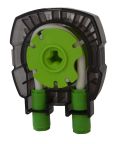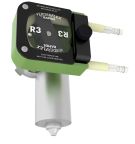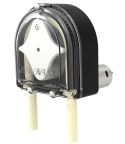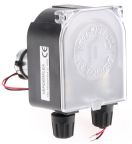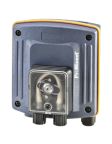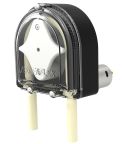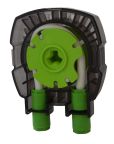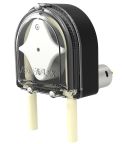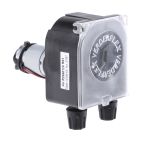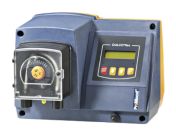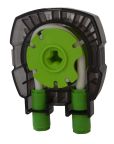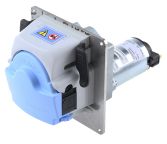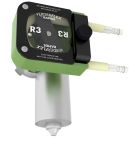Peristaltic Pumps
A peristaltic pump, also known as a tube pump or hose pump, is a type of positive displacement pump used in plumbing and pipeline systems. It operates by using a rotating mechanism to compress and release a flexible tube or hose, creating a peristaltic motion that moves fluids through the system.
How do they work?
The pump consists of several key components. These include the pump head, which houses the tubing and the rotor assembly, and the drive mechanism, which rotates the rotor. The rotor typically has several rollers or shoes that compress the tubing against a fixed surface, creating a squeezing action. As the rotor rotates, the squeezed portion of the tube moves along, pushing the fluid in the desired direction.
Advantages of a Peristaltic Pump?
One of the key advantages of peristaltic pumps is their ability to handle a wide range of fluids, including corrosive or abrasive substances, as the fluid only comes into contact with the tubing. This makes them suitable for applications in which the pumped fluid needs to be isolated from the pump mechanism, reducing the risk of contamination or damage to the pump.
What applications would peristaltic pumps be used?
Peristaltic pumps are often used in plumbing and pipeline systems for various purposes, such as dosing chemicals, transferring liquids, or pumping viscous or shear-sensitive fluids. They are particularly useful in situations where precise flow rates, gentle handling of the fluid, or self-priming capabilities are required. Additionally, their simple design and ease of maintenance make them popular choices in many industries, including water treatment, pharmaceuticals, food and beverage, and chemical processing.
Popular Searches
Related links
- Verderflex Peristaltic Electric Operated Positive Displacement Pump 24 V
- Verderflex Positive Displacement Pump
- Verderflex Head for Peristaltic Pump Electric Operated Positive Displacement Pump 1 bar, 12/24 V dc
- ProMinent Positive Displacement Pump 90 → 253 V ac
- Verderflex Peristaltic Electric Operated Positive Displacement Pump 1 bar, 12 V dc
- ProMinent Peristaltic Electric Operated Positive Displacement Pump 4 bar, 100 → 240 V
- Xylem Flojet Diaphragm Electric Operated Positive Displacement Pump 20 bar, 230 V
- Verderflex Head for Peristaltic Pump Electric Operated Positive Displacement Pump, 1 bar
